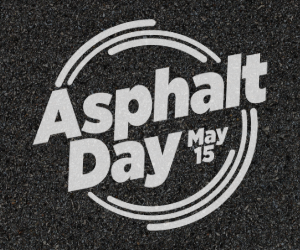 This month I want to give you a quick overview of Warm Mix Asphalt (WMA); it is the big news in the asphalt industry.
This month I want to give you a quick overview of Warm Mix Asphalt (WMA); it is the big news in the asphalt industry.
I’ve been involved in the asphalt business for 30-plus years now. And I’ve never seen any new technology gain acceptance like warm mix. The last numbers that I am aware of showed that 44 states in the U.S. have completed WMA jobs. That’s an incredibly quick rate of implementation, considering that the first U.S. project was done in 2004. Superpave was a relatively tough sale; WMA has had incredible acceptance.
Getting people to use it has been easy because of the advantages it claims over conventional hot mix. Some of the benefits attributed to WMA include:
less environmental impact
less fuel used by the mixing plant
decreased mixing plant wear (and less unscheduled downtime)
increased RAP content
longer haul distances and an extended paving season
increased time for compaction (leading to better densities)
longer pavement life (due to less binder oxidation).
WMA works by using a variety of products and processes to replace some of the heat energy normally required for producing the asphalt mix. WMA is different from most new technologies in that there is not one unique process or material. There are three main categories of WMA, including foaming, organic (wax) and surfactant (chemical) means.
Keeping the mixing temperature low (somewhere around 250º F typically) results in greatly reduced emissions, both odor and fumes ? a huge advantage. The mixing temperature can be reduced by 50 to 100º F. There is a significant energy savings — another big advantage to producers. Also, workers find the reduced temperatures to be more comfortable and that’s another benefit.
The lowered mix temperature has a slower cooling rate so the working temperature is retained longer. So the mix can be hauled further and there is more time available for compaction. This should result in better compaction and in turn, more durable pavements. The lower operating temperatures also cause less oxidation of the asphalt binder, which could contribute to longer pavement life.
As with the introduction of any new technology, some concerns or considerations have been identified. These concerns do not seem to be overwhelming but do show the need for careful monitoring and further research. Concerns identified thus far include:
developing a suitable specification
lab mix design procedures
potential stripping concerns
rutting resistance.
Many agency specifications do not provide for using WMA technology. For example, a specification may only include a provision for a minimum mixing temperature. Typically WMA operating temperatures would fall below these set minimum values. State agencies are working to accomodate the new technology and many agencies are taking a permissive approach to work with producers and suppliers.
Warm mix presents some challenges for lab mix design and testing. Some of the WMA approaches can impact the PG grading of a binder. Incorporating additives or manipulating the binders can change the properties such that the final PG grade can be changed. Additionally, replicating the conditions under which the mix is produced in the field can be a challenge in the lab. This is particularly true of foaming operations. Devices that can produce foaming in a laboratory setting are available.
Another concern is the potential for moisture damage or stripping of WMA mixes. Some processes introduce additional moisture to the mix components and the reduced operating temperatures may not remove all the water trapped in the aggregate. Before being approved for use, mixes should be thorougly evaluated for moisture damage susceptibility and to determine whether some anti-stripping remedy is needed. Some of the WMA technologies already include anti-stripping properties.
Finally, since hot mix utilizes an asphalt binder that has undergone more short-term oxidation or hardening than a binder used in the WMA process is likely to experience, there is some concern that the WMA mixes will not have the same rutting resistance. If an agency has a concern about WMA rutting potential, lab testing using one of the rutting evaluation devices is advised.
Because of the tremendous interest in WMA, a great amount of research is underway to address the identified concerns. With just a brief internet search, I found listings for studies such as “Mix Design Practices for Warm Mix Asphalt Technologies,” “Engineering Properties, Emissions, and Field Performance of Warm Mix Asphalt Technologies” and “Long Term Field Performance of Warm Mix Asphalt.” Several sections of NCAT’s test-track are being used to evaluate WMA. Also, several states have trial sites under review.
All-in-all, I think warm mix is here to stay. The positives overcome the concerns. But take a look at it for yourself. If you have an interest in learning more about WMA, a lot of information is available. Our archives have several articles. Other suggested resources include the website www.warmmix.org and the FHWA site.














